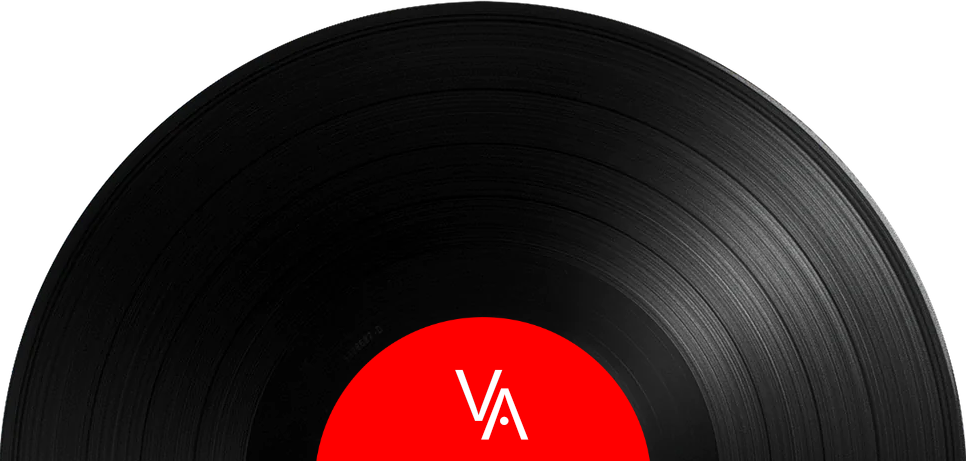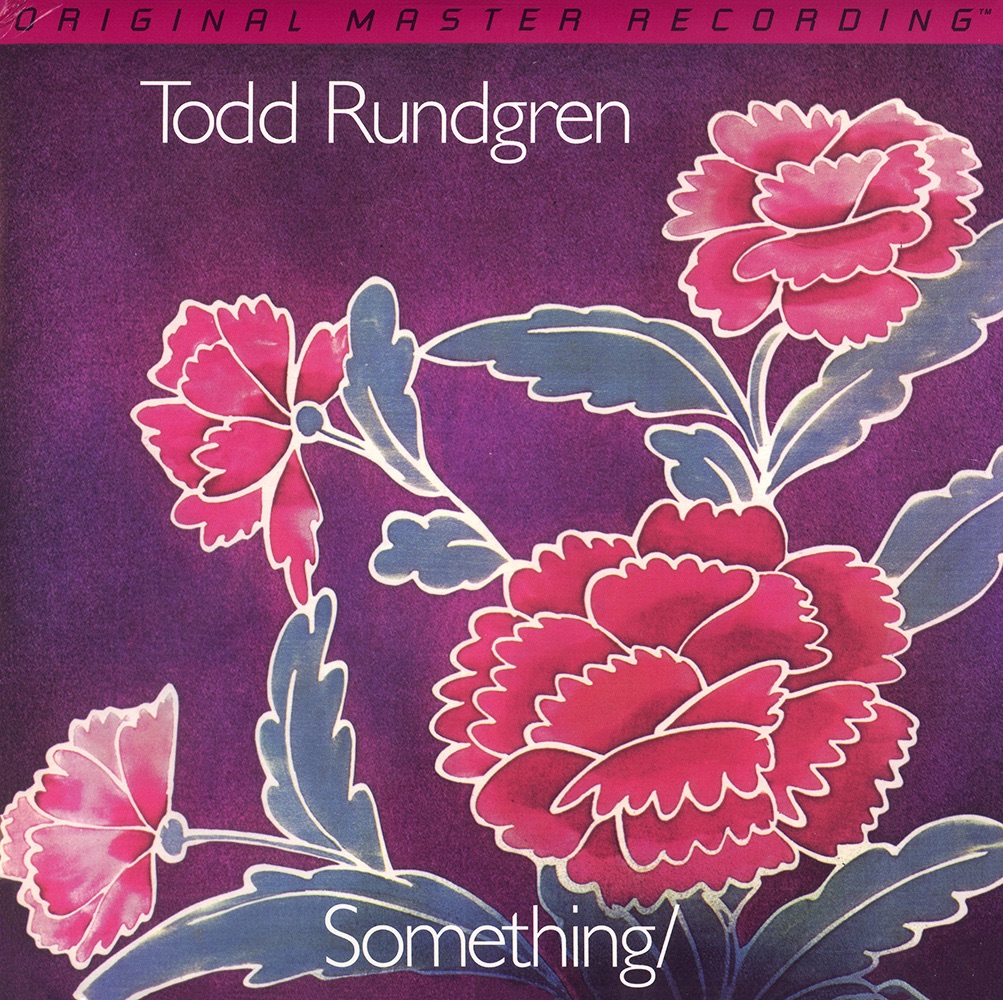
This is one of those albums that in places approaches perfection, maybe even attains it. Released in 1972, it’s the third LP from Rundgren (his first double LP) and on three sides he plays all the instruments, sings all vocals and sometimes serves as producer (he was, at least for a time it seems, fed up working with other musicians). The rest of the album was recorded live in the studio without any overdubs, and finishes with two small extracts of archive recordings featuring Rundgren in the 1960s.
There’s a lot of great music in these grooves, but the standout tracks everyone can probably hum are Hello It’s Me, It Wouldn’t Have Made Any Difference and I Saw The Light.
The Mobile Fidelity reissue, which was released in 1995 and is the one I have in my collection, is so much better-sounding than the original Bearsville pressing (I had a lot of Rundgren albums on the Bearsville label and thought they all sounded horrible). But this MoFi release sounds spacious, almost dreamlike in places, and stands the test of time as a masterpiece that for some reason only peaked at number 29 on the Billboard 200. The vinyl is quiet and it's easy to sit back and get lost in the music, which seems to be surrounding me on all sides. Lush is a word I would use to describe how this record sounds.
The liner notes describe side one of the album as “a bouquet of ear-catching melodies,” side two as “the cerebral side,” side three as “the kid gets heavy,” and side four as “baby needs a new pair of snakeskin boots (a pop operetta)”. I Saw the Light was placed at the beginning of the album because it was felt to be the most likely hit, a thought process/decision almost anathema to the way I imagine Rundgren thinks, which means it was probably down to the label bean counters. That song is said to be influenced by Carole King, and you can hear shades of I Feel The Earth Move lurking in the background.
Rundgren began each song by situating himself inside I.D.‘s cramped drum room. “I’d have the song in my head, sit down and just play,” he recalled. “Which is why some of the songs begin and end in a completely different tempo.”
Producer James Lowe said he was never sure where the song was going "until we’d put down about four or five tracks. He’d leave these blank spaces all over the place - there would be eight or 12 bars of nothing - and then he’d just go back afterward and pop in a piano or guitar in that spot. As a result, I was mostly working in the dark. Even lyrically, I’d have no idea what the songs were about. He’d just go into it, and before long, a whole song would be formed.”
Rundgren was trying all sorts of things to get the unique sound he wanted. On Couldn’t I Just Tell You, his acoustic guitar was snaked through a compressor set to maximum gain. “That sucking-limiter thing worked great on that song,” Lowe said. “We were using these really nice Techtronics limiters on almost everything. Most of the tracks were right on the edge, cause we were really trying to make something that had a little more bite than the usual thing. As a result, it’s very top-end and pretty raucous.”
Limiting also played a role in Rundgren’s trademark drum sound. “Where a lot of people at the time were doing basic stereo set-ups with separate bass drum and snare, we’d dedicate five or six tracks of drums and have all the individual drums isolated,” Lowe said. “That way, if we wanted to go back later and put a limiter on the snare and really squash it or strain it out some other way, we could. As opposed to having the overhead locked in to the snare, or the bass pedal, or whatnot. Plus we could mix the entire set right across the stereo field, as opposed to being totally left and right.”
With a handful of tracks in the can, Lowe and Rundgren borrowed a Scully 8-track, a U-87 condenser mic and some outboard gear and headed up to Rundgren’s apartment in nearby Nichols Canyon, where they continued working. “It was mainly just guitar and vocal overdubs,” Lowe recalled. “But it definitely contributed to the vibe of the album.” During one of those living-room sessions, Lowe snapped the photo of Rundgren striking a mock-Nixon pose that appears in the album’s gatefold.
Final vocals were cut at New York’s Record Plant and Albert Grossman’s Bearsville Studios in Woodstock, NY. Released in early 1972, Something / Anything? was a surprise hit.
This pressing is hard to find and commands a fairly steep price in the marketplace, but Warner/Rhino recently released a 180-gram reissue, mastered by Chris Bellman at Bernie Grundman studios and pressed at RTI that is supposed to sound incredible. And with Bernie working on it you can bet that it is.
If you don’t have this album in your collection, you need it. It is …
This is one of those albums that in places approaches perfection, maybe even attains it. Released in 1972, it’s the third LP from Rundgren (his first double LP) and on three sides he plays all the instruments, sings all vocals and sometimes serves as producer (he was, at least for a time it seems, fed up working with other musicians). The rest of the album was recorded live in the studio without any overdubs, and finishes with two small extracts of archive recordings featuring Rundgren in the 1960s.
There’s a lot of great music in these grooves, but the standout tracks everyone can probably hum are Hello It’s Me, It Wouldn’t Have Made Any Difference and I Saw The Light.
The Mobile Fidelity reissue, which was released in 1995 and is the one I have in my collection, is so much better-sounding than the original Bearsville pressing (I had a lot of Rundgren albums on the Bearsville label and thought they all sounded horrible). But this MoFi release sounds spacious, almost dreamlike in places, and stands the test of time as a masterpiece that for some reason only peaked at number 29 on the Billboard 200. The vinyl is quiet and it's easy to sit back and get lost in the music, which seems to be surrounding me on all sides. Lush is a word I would use to describe how this record sounds.
The liner notes describe side one of the album as “a bouquet of ear-catching melodies,” side two as “the cerebral side,” side three as “the kid gets heavy,” and side four as “baby needs a new pair of snakeskin boots (a pop operetta)”. I Saw the Light was placed at the beginning of the album because it was felt to be the most likely hit, a thought process/decision almost anathema to the way I imagine Rundgren thinks, which means it was probably down to the label bean counters. That song is said to be influenced by Carole King, and you can hear shades of I Feel The Earth Move lurking in the background.
Rundgren began each song by situating himself inside I.D.‘s cramped drum room. “I’d have the song in my head, sit down and just play,” he recalled. “Which is why some of the songs begin and end in a completely different tempo.”
Producer James Lowe said he was never sure where the song was going "until we’d put down about four or five tracks. He’d leave these blank spaces all over the place - there would be eight or 12 bars of nothing - and then he’d just go back afterward and pop in a piano or guitar in that spot. As a result, I was mostly working in the dark. Even lyrically, I’d have no idea what the songs were about. He’d just go into it, and before long, a whole song would be formed.”
Rundgren was trying all sorts of things to get the unique sound he wanted. On Couldn’t I Just Tell You, his acoustic guitar was snaked through a compressor set to maximum gain. “That sucking-limiter thing worked great on that song,” Lowe said. “We were using these really nice Techtronics limiters on almost everything. Most of the tracks were right on the edge, cause we were really trying to make something that had a little more bite than the usual thing. As a result, it’s very top-end and pretty raucous.”
Limiting also played a role in Rundgren’s trademark drum sound. “Where a lot of people at the time were doing basic stereo set-ups with separate bass drum and snare, we’d dedicate five or six tracks of drums and have all the individual drums isolated,” Lowe said. “That way, if we wanted to go back later and put a limiter on the snare and really squash it or strain it out some other way, we could. As opposed to having the overhead locked in to the snare, or the bass pedal, or whatnot. Plus we could mix the entire set right across the stereo field, as opposed to being totally left and right.”
With a handful of tracks in the can, Lowe and Rundgren borrowed a Scully 8-track, a U-87 condenser mic and some outboard gear and headed up to Rundgren’s apartment in nearby Nichols Canyon, where they continued working. “It was mainly just guitar and vocal overdubs,” Lowe recalled. “But it definitely contributed to the vibe of the album.” During one of those living-room sessions, Lowe snapped the photo of Rundgren striking a mock-Nixon pose that appears in the album’s gatefold.
Final vocals were cut at New York’s Record Plant and Albert Grossman’s Bearsville Studios in Woodstock, NY. Released in early 1972, Something / Anything? was a surprise hit.
This pressing is hard to find and commands a fairly steep price in the marketplace, but Warner/Rhino recently released a 180-gram reissue, mastered by Chris Bellman at Bernie Grundman studios and pressed at RTI that is supposed to sound incredible. And with Bernie working on it you can bet that it is.
If you don’t have this album in your collection, you need it. It is …



